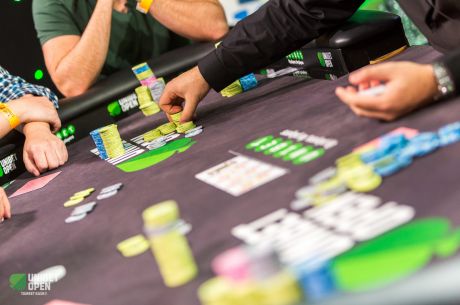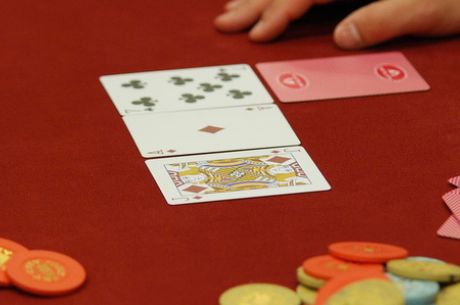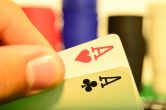You Made Your Flush on the River - Now What?
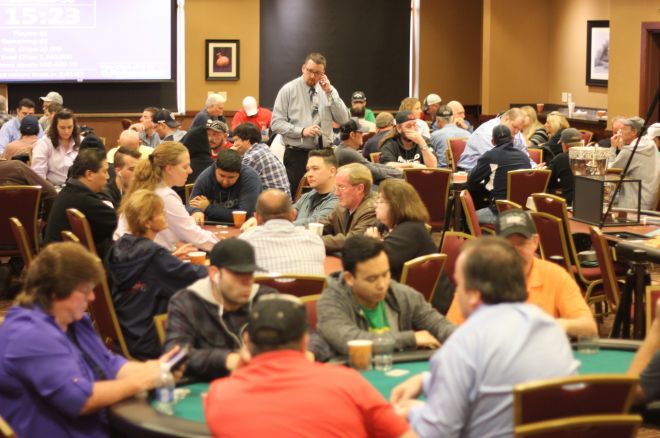
Covering live poker tournaments for a living affords me the opportunity to see countless thousands of hands played out, many of which offer interesting and potentially valuable insights into how players — both amateurs and professionals — play the game. In this ongoing series, I’ll highlight hands I’ve seen at the tournaments I’ve covered and see if we can glean anything useful from them.
The Scene
It’s Day 1b of the RunGood Poker Series Downstream Casino Main Event at Harrah’s New Orleans (pictured above). The event sported a $675 buy-in with a $100,000 guaranteed prize pool. The tournament had just kicked off the second of three starting flights and was still in the early levels with unlimited reentries still allowed, but not many were too far from the 20,000-chip starting stack.
This hand took place in Level 3 (100/200).
The Action
Picking up the action on fourth street, the board read 4♥3♠K♣J♣. Three players had seen the turn, and first to act was the small blind, who bet 2,000. Ted Hinton called in the cutoff, and the player on the button fired out a raise to 5,200. The bettor folded, but Hinton came along for the 8♣ river.
Hinton checked, and his opponent immediately checked back and turned over his cards — 3♣3♦ for bottom set. Hinton had caught him on the river, though, showing A♣10♣ for the nut flush and taking down the sizable early pot.
Concept and Analysis
When we pick up the hand on fourth street, Hinton is calling a bet of 2,000 into an unknown pot with a gutshot straight draw, a flush draw, and an overcard. The button then makes a raise to 5,200, chasing out the bettor.
Hinton has 10 outs that will give him the nuts — clubs that don’t pair the board plus the non-club queens — plus he might even have the best hand if his opponent is semi-bluffing with a weaker draw. Hinton’s call seems quite sensible, especially given the money he might win if his opponent has a strong hand (as we discover he does) or a smaller flush draw and they both hit.
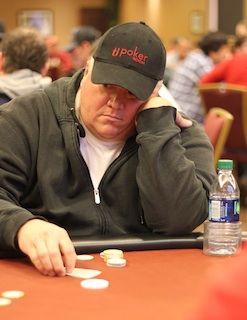
As for the player on the button in this spot, he definitely made a raise that was far too small to chase out a hand of Hinton’s caliber, a big mistake on his part. He allowed Hinton to play his hand correctly and call to see the river.
When the 8♣ arrives, Hinton checks, and his opponent is more than happy to show down his set, hoping to take down the pot with the best hand.
Of course, Hinton was hoping to see a bet out of his opponent, one which he could check-raise holding the nuts to build as big of a pot as possible. However, look at that river card. If you were holding a set in that scenario on the button, isn’t that one of the last cards in the deck you would want to see?
Maybe you would value bet that card, maybe you wouldn’t. Either way, absent some sort of read on your opponent, this is a spot where it’s just best to lead right out with a rivered flush. Does it look obvious? Somewhat, yes, but remember most people hate folding good hands and will just sigh and pay it off.
When improving a hand on the river with a draw like this, we have to consider how likely it is the opponent will check back. In the case of a flush draw, usually the most obvious draw on most boards, many players check back for fear their opponent made the flush. It’s important to get value when hitting draws, so lean towards betting for value if you think your opponent is going to check back.
In this hand, although Hinton was still getting a fair price when he called on the turn, he missed a chance to get a good-sized bet off on the river.
Want to stay atop all the latest in the poker world? If so, make sure to get PokerNews updates on your social media outlets. Follow us on Twitter and find us on both Facebook and Google+!

